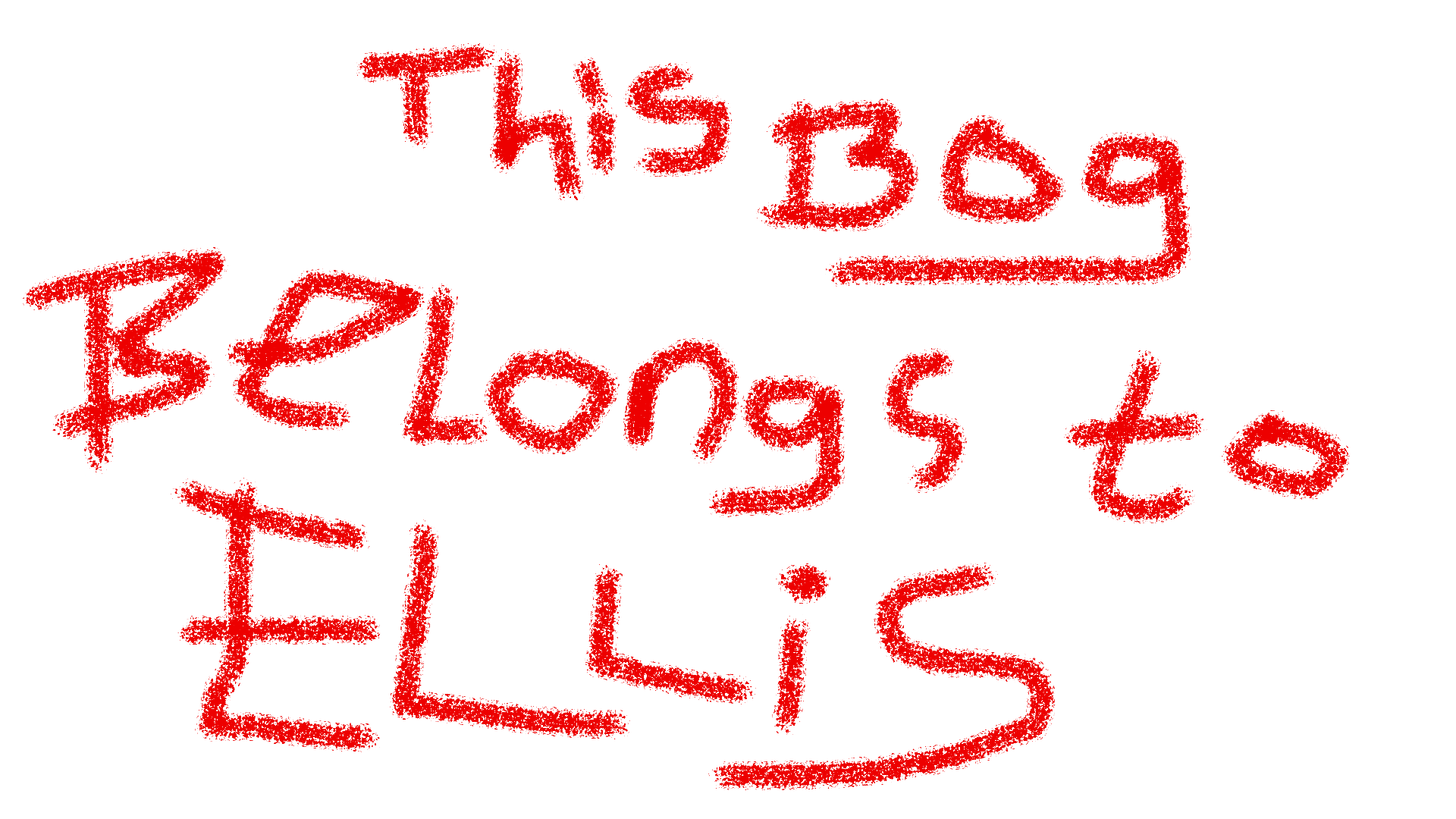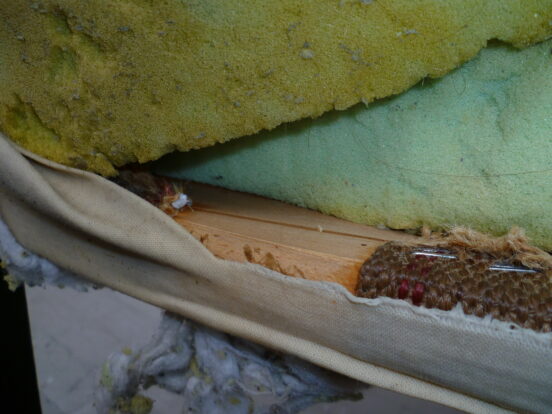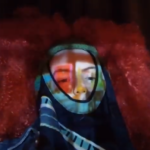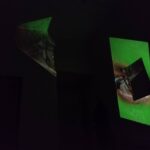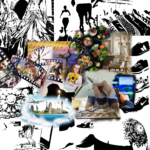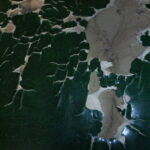Here’s my next victim, a rather gross, soggy chair I’d found by some bins, the morning after it had rained quite heavily. This one was a lot heavier and uncomfortable to carry.


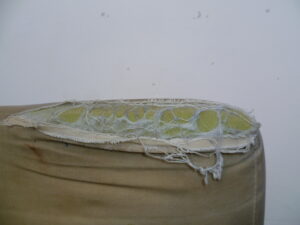
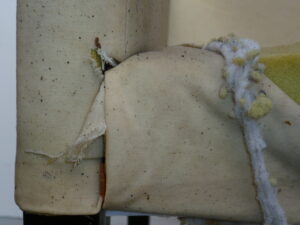
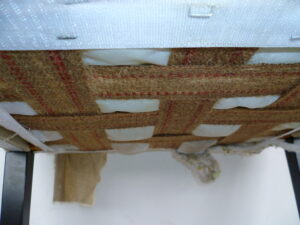


I then proceeded to deconstruct and reconstruct the chair. I used two microphones at either end of the room to give my footage a binaural effect, making the videos more immersive. This is a concept I’ve become quite interested in having learnt about it in my elective course, and through the power of YouTube recommendations I was led down a rabbit hole of ASMR (Autonomous Sensory Meridian Response) videos, many of which use two microphones for a stereo experience and some even use a dummy head – a model head with two microphones in each ear to replicate the human hearing experience with more accuracy. The aim of these videos is to trigger a pleasant, tingly sensation in the listener which can be very relaxing for some. It’s a bizarre side of the internet, with some channels creating overarching narratives for their videos instead of simply tapping things. Even the basic concept is pretty odd: that humans can derive pleasure from the sound of inanimate, ordinary objects being tapped, crinkled and rubbed.
The room I filmed myself in was a small space between two bigger studios, this was preferable over the shared space as it allowed me to record without disturbing other students so much, and there was less reverberance here than in the bigger rooms. I did have to take some breaks during recording however as the sound of drilling could be heard from the neighbouring studio for a while.
My approach to destroying the chair was quite methodical, inspired by the Fluxus ‘piano activities’ in which said instrument would be meticulously destroyed, or played if you choose to interpret it that way. I set out 4 stages for myself: tapping, ripping, smashing, and reconstructing. Because of the limitations of my camera (which would time out frequently and died before I was finished) and some other outside factors I couldn’t control due to being in a shared studio space, I could not record this process I had planned as on cohesive film, so I have instead tried some different ways of presenting the little footage I managed to record, which you can watch below (I recommend you wear headphones but don’t have your volume on high).
For this first clip, I keyed out the red floor then played the second half of the recording as a mirror to the first half, giving it a different sense of space to the others. Since the keying was not perfect, the video is covered in artefacts that give it a kind of digital texture.
The second video is a compilation of clips in which I ripped apart the chair using my hands and a penknife. All these clips get close and intimate with the fabric, and the sounds I captured were quite pleasing. I had started filming this process with the camera taped to my head, unsurprisingly this didn’t last long so I filmed the rest with the camera in hand. Unfortunately, the quality of this footage is rather poor as my camera doesn’t deal well with close shots. I edited these clips out of order, so it would feel more dynamic as the video jumped around the chair showcasing different methods of tearing the material apart.
Originally I had intended to use a hammer of some kind for this stage but I couldn’t get my hands on one. This massive log that just happened to be in the studio did the trick though! After editing down the video, I applied a trick called data moshing, so not only is the chair being destroyed, but the video file is too.
One I was satisfied by the level of destruction, I moved onto the final stage which was the chair’s reconstruction. The footage I captured of this was not great, and the sound of tape is rather piercing to listen to, so I have not edited it much beyond the raw files.
Here are some photos of the reconstructed chair. I pieced it together intuitively, picking up odd bits and covering them in brown plastic tape. This style was partly inspired by the work of Thomas Hirshhorn, who uses a lot of common and waste objects to create expansive and complex installations. I wanted this to give the rough idea of a chair, still keeping to four main legs, but its original purpose may not be apparent to someone viewing it without context.
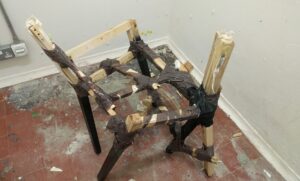
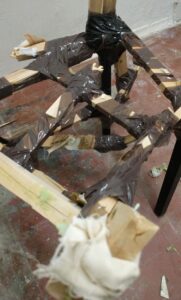

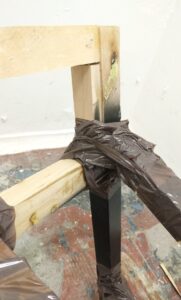
I’ve been thinking about the blurry line between the chair being a piece of junk and an item, and the point at which it becomes an ‘art object’. Usually this would be an interesting topic to debate, but the question was forced upon me in a way that generated some rather unnecessary stress. There is limited storage space at the college of art, space reserved for “works in progress”, “canvases that need to dry”, I was told, and not for “junk like a pile of tires that some sculpture student can’t be bothered to take back to their flat”. I had carried this grotty chair down three flights of stairs and through the streets. In my mind I saw it as a work in progress- to me this chair will always be an art object, and I’m sure if this hypothetical student with the tires thinks the same too, surely the massive, half empty art department would be a much more adequate storage space than a tiny student flat? Apparently not, and that’s what worried me. A member of staff probably wouldn’t perceive this chair as a work-in-progress piece of art, and my social anxiety would not allow me to question it. So after my first trip to the ECA main building, I heaved the bulky chair back to my flat. After my second visit, in which the chair was destroyed and reconstructed, I felt the chair was abstract enough from its original form to be no longer be viewed as junk, even though the majority of the materials were the same, and the tape I used was cheap and tacky. Even so, I’m still worried that the staff member won’t see eye to eye with me, and I’ve considered adding to this piece purely as a way to make it a more convincing ‘art object’, for example painting it – a process and material that has been ingrained into my mind from a young age to be some sort of standard of what art should be – but would that really add something to this piece, other than make it more pleasing to some aesthetic? I will stop rambling now before I dig up some A-levels trauma and cry myself to sleep.
